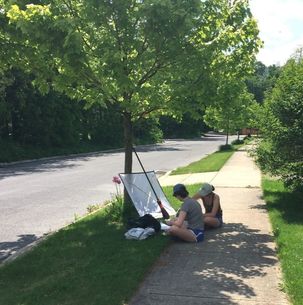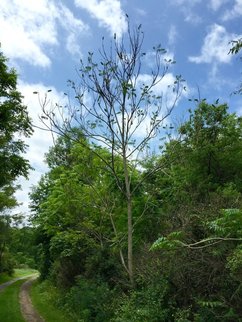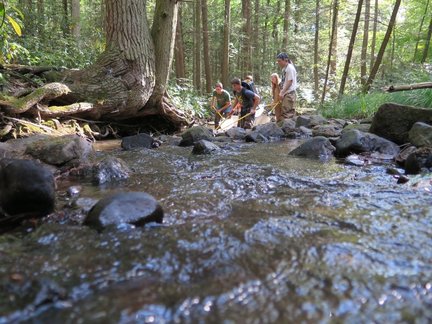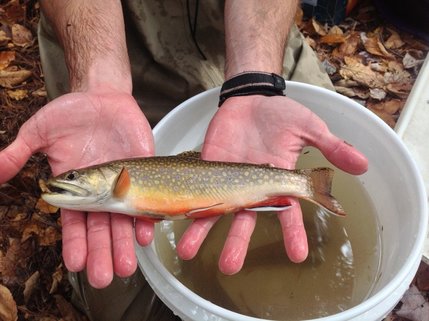RESEARCH
Impacts of Biological Invasions
Importance of native plants to urban forests and natural areasMost plants in our urban ecosystems (e.g. home landscaping and street trees) are non-native. How do these non-native plants differ from native plants in their influence on communities at higher trophic levels? Can restoring native plants to these systems provide improved ecosystem services?
|
Ailanthus wilt and restoration of sites invaded by Tree-of-HeavenThe use of the fungus Verticillium non-alfalfae has recently been demonstrated to induce dramatic and species-specific mortality of Tree-of-Heaven (Ailanthus altissima) stems and clones. But how effective are fungal treatments in restoring healthy native plant communities? Are there legacy effects of Tree-of-Heaven allelochemistry or Verticillium-infection on soil microbial communities?
|
Allochthonous Inputs to Stream Ecosystems
Hemlock headwater ecosystems
|
Ecosystem impacts of stocked troutFish stocking represents a significant, yet under-studied input of nutrients into stream ecosystems. In a typical year, as many as 5 million hatchery-raised trout are stocked in streams across Pennsylvania, a significant nutrient load to these ecosystems. How many fish are subsequently caught and removed from streams (return-to-creel)? To what degree are the remaining fish taken up into local food webs or left to degrade further downstream?
|




